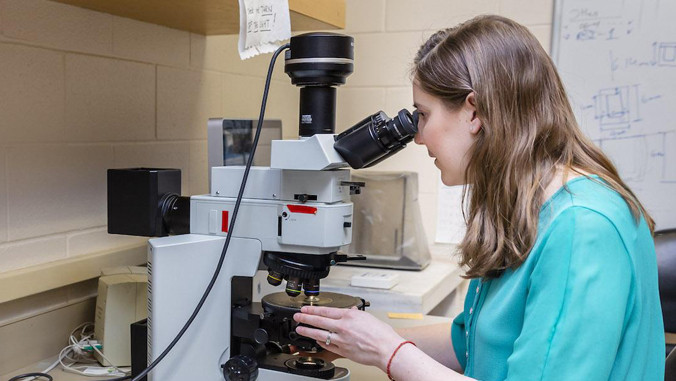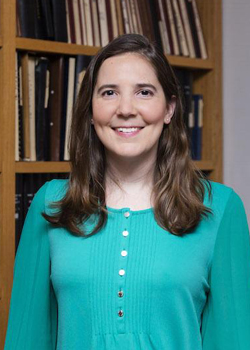
A University of Hawaiʻi at Mānoa alumna has been selected for the 51 Pegasi b Fellowship from the Heising-Simons Foundation. The three-year fellowship provides exceptional postdoctoral scientists with the opportunity to conduct research in planetary astronomy and the time and space to establish distinction and leadership in the field.
Emily First, PhD graduate in geology and geophysics in the School of Ocean and Earth Science and Technology (SOEST), will receive $375,000 to support her research at Cornell University to understand the composition of rocky planets across the galaxy by cataloging and interpreting geological signals.
Viewing a meteorite from Mars under a microscope served as a moment of awe for First, one of her early connections to the wonders of planetary science. With a wide-ranging background in geology, she is well equipped to tackle some of the most intriguing problems in exoplanet research today. From elucidating the history of Earth’s volcanic rocks to probing the origins of Moon rocks, she is an expert at considering minute details within their broader contexts.

“Emily will be generating the calibration set required to take advantage of the enormous data streams that will be arriving from the 2021 James Webb Space Telescope,” said Julia Hammer, SOEST earth sciences professor and First’s advisor during her doctoral work. “Given her skills in geology, petrology, sample analysis and numerical modeling, Emily is exceptionally well equipped to characterize sources of variability in the emission spectra of exotic rocks and contribute to our understanding of exoplanets.”
In her fellowship, First will gather diverse rock types from across the solar system that span a range of compositions and textures. After examining each specimen at a microscopic level, she will measure how the rocks absorb and emit light, and synthesize her findings into a robust and accessible dataset. Other planetary scientists will be able to compare this information to light signals from exoplanets to infer more about their compositional properties, and recognize ways these signals could be affected by rock textures and other physical properties. First’s interdisciplinary work will bridge the contributions of two fields, and support future research in determining the material compositions of potentially hundreds of exoplanets.
“Pursuing challenges in exoplanet research feels like a natural way to branch out from my background in geology,” said First. “It’s energizing to know that the database I’m building has the potential to support countless exoplanet research projects in the years to come.”
For the full story see SOEST’s website.
—By Marcie Grabowski

